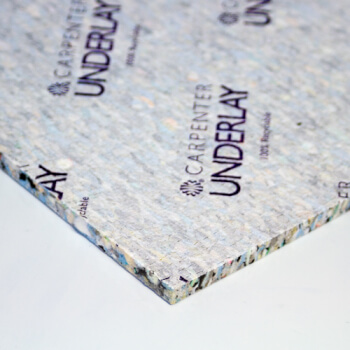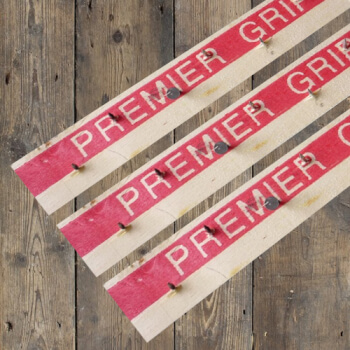Everything You Need To Know About
Viscose
Carpet
By Jim (31/10/2016)
Welcome Back!
In our blog we have discussed many different materials - wool, nylon and polypropelene (the most common manmade carpet fibres) and of course all the natural floorcoverings - but we haven’t yet covered viscose.
It’s not as commonly used in the manufacture of carpets, but it is still a significant material which is worth knowing about when you come to make a purchase, so here is (pretty much) everything you need to know...
What Is Viscose?
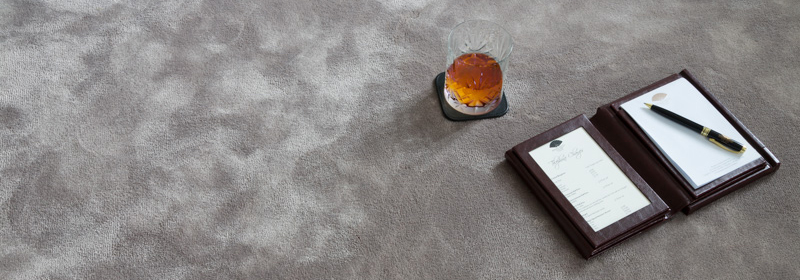
Image: Cannes Oxford Grey ©Intercontinental Trading
‘Viscose’ is a little hard to define. It has a long history, it involves a lot of complex chemistry and the word is used differently depending on the context. It can be used to refer to a chemical solution, a process and the resulting material.
But it doesn’t stop there. There are many variations of the process, which produce similar but subtly different fibres which have lots of different names, including copyrighted brand names!
Rayon, modal, lyocell, luxcelle, tencel, evlan, faux silk, bamboo silk, art (short for ‘artificial’) silk - the list goes on. The most common name for the fibre we find in carpets is viscose rayon, but it may be referred to by any one of the above.
So, before we go into the pros and cons of viscose carpet, we’ll give you a little background to help clarify exactly what we mean when we refer to something as viscose, and what it is you’re buying.
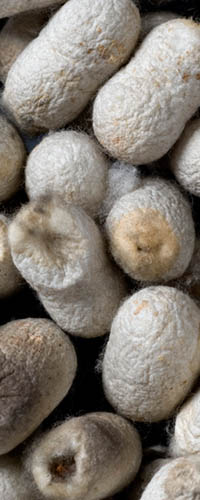
The Silk Plague and the Invention of Viscose
Image: Infected Silkworm Cocoons Used By Louis Pasteur
Source: WikiMedia Commons
In the mid 1840s, diseases began to affect domesticated silkworms, which were farmed to fulfill the huge demand for silk across Europe.
This was a particular blow for France, where a condition called ‘Pébrine’ was devastating the silkworm population - eventually the scientist Louis Pasteur, who is most famous these days for making milk safe to drink, was appointed to study the disease in 1865.
While assisting Pasteur one of his students, Hilaire de Chardonnet, began to experiment with potential artificial alternatives to silk, which began (as so many scientific discoveries do) with an accident.
Working in his darkroom, Chardonnet had spilled nitrocellulose (an explosive compound then used in photography) and observed that when he tried to clean up the spill, the solution formed tendrils or fibres.
Although eventually with Pasteur’s help Pébrine was finally contained, and Japanese silk imports had risen to sate the European demand, Chardonnet felt there was still a market for his product, now refined into what he modestly called ‘Chardonnet Silk’.
Unfortunately, like the nitrocellulose it was made with, the original Chardonnet Silk was prone to catch fire and explode, which didn’t make it ideal for clothes. It took several attempts before these initial problems were solved, but eventually it was commercially produced around 1891.
Around the same time in England, chemists Edward John Bevan and Charles Frederick Cross, who specialised in making paper, devised a new process for creating this silk-like fibre which they christened ‘viscose’, patenting it in 1892 with their business partner Clayton Beadle.
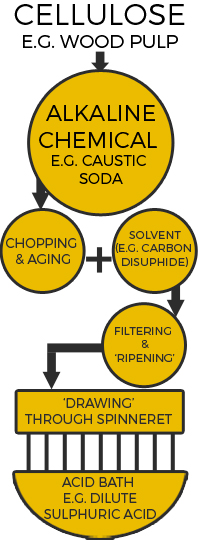
The Viscose Process
Image: The Viscose Process © Designer Carpet Remnants
So, what was the method that Bevan and Cross developed?
How is viscose made?
Well, as we said before, the ‘viscose process’ has many different variations - to make matters more confusing, some of them are used to create other materials like cellophane - but there are some techniques which are common when making viscose rayon.
Viscose is a semi-synthetic fibre - made by taking a natural material, in this case anything which contains cellulose (wood pulp, bamboo, soybeans, eucalyptus, cotton) and putting it through an artificial chemical process.
This is what distinguishes it from polypropylene or nylon, as they are 100% man-made.
The process generally begins by soaking the organic material in a strongly alkaline chemical, such as sodium hydroxide (caustic soda) and adding a solvent, typically carbon disulfide - this creates the eponymous ‘viscous cellulose solution’.
This is allowed to 'ripen' or mature - the actual chemical process is depolymerization, which means the long chains of molecules in the cellulose are broken down into smaller chains.
It is then extruded or 'drawn' through small holes (known as ‘spinnerets’) and into a bath of more chemicals (this time an acid, commonly dilute sulphuric acid) which hardens the solution into the fibre we all know and (sometimes) love.
It's then washed to remove all those harmful chemicals and make it suitable for multiple uses.
But What Does This Mean For Me?
Okay, enough chemistry and history.
Hopefully this background will help you when you come to make a decision, and avoid any cunning marketing tricks- for example, if a product is described as ‘bamboo silk’, you’ll know it is chemically very similar to a product made with ‘rayon’.
They will also share many properties - so here’s the lowdown...
The Pros and Cons Of Viscose
Pros...
Feel
Viscose was designed to be a substitute for silk and so carries with it the same softness and smoothness - you will rarely find anything softer than a viscose carpet!
Unlike polypropylene, viscose carpets do not suffer from a static buildup, and are very good insulators so will keep you warm in the winter. Plus they tend to have a thick pile, making them feel truly luxurious and comforting - if you don’t believe ask, just order a free sample of one of our viscose remnants!
Price
Despite the complex process used to produce it, viscose is still relatively cheap to make, and that saving is passed on to the customers!
Compared to wool or even polypropylene carpet, viscose is very affordable, so it’s always worth considering if you are on a budget.
Look
Viscose has a consistency of appearance, colour and texture which is impossible to achieve with natural fibres.
If you are one of those people who likes things to be ‘just so’, then it is an excellent choice! Also, as we discussed in our previous blog on Winter Trends, the ‘crushed velvet’ look is very in at the moment, and some viscose carpets (especially the Elegance range from Intercontinental Trading) will often provide that opulent, chromatic, appearance.

Image: Viscose Elegance Beige ©Designer Carpet Remnants
Cons...
Wear and Flattening
There is no denying that viscose carpet doesn’t stand up to wear and tear as well as wool or some of the natural floorcoverings - it tends to flatten quite easily so it’s best avoided for high-traffic areas. Bedrooms and sitting rooms are probably best!
There have been reports of viscose (rugs in particular) ‘shedding’ their fibres, however this is much more to do with poor construction than the viscose itself - needless to say, we take care only to stock high-quality viscose products.
Cleaning
Unlike the 100% manmade fibre polypropylene, viscose is rather delicate and does not take kindly to harsh chemicals like bleach or moisture.
Water will get into the cellulose fibres and cause them to swell up and the twists of the carpet will ‘blossom’ and become slightly fluffy- in extreme cases they can even lose colour and develop a yellowish hue.
This does not make the carpet unusable, but it will be noticeable. It is best cleaned use dry-cleaning solvent, or by a professional cleaner.
However, like wool viscose can be stain-guarded to prevent moisture soaking into the carpet and make clean up a whole lot easier.
All that said, it’s not the ideal carpet to have in areas where spills are likely to happen - ones with young children in them, for example!
Environmental Issues
Not necessarily a problem with the carpet itself, but it is always worth pointing out for our ecologically conscious readers (who may well be interested in our previous blog about Carpet And The Environment) that there are issues around the production of viscose, specifically the disposal of certain chemicals. After all, you’ll remember that sulphuric acid was one of the commonly used ones - it’s not easy to get rid of that stuff!
As we touched on above, not all viscose is made equal Some processes (like that used to make lyocell) are far more environmentally friendly, recycling the majority of their potentially harmful chemicals.
The Bottom Line...
If you want a carpet that looks good, feels good and won’t break the bank, then viscose is a great choice - however, if you are looking for a carpet which will stand up to a lot of hardship, you might want to try wool instead!
And that’s all you need to know about viscose! We hope it was useful to you, and if you now feel like checking out our viscose carpets then you can find them here.
It is worth mentioning Kersaint Cobb’s seasilk range which is not viscose at all but nylon - like viscose it is designed to be soft and smooth like silk, but it is also water resistant and more hardwearing - well worth a look!
Until next time, farewell - but remember you can always contact us for more info.
Enter your required size for our most accurate pricing and availability.








